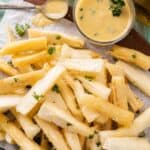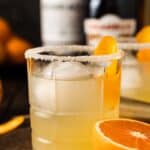TL;DR
- Clams play a crucial role in marine ecosystems, contributing to nutrient cycling, sediment stability, and food web dynamics.
- Overharvesting of clams can lead to significant ecological disruptions, affecting water quality, habitat structure, and biodiversity.
- Different harvesting methods, such as hand raking and dredging, have varying levels of impact on marine environments and non-target species.
- Sustainable clam harvesting practices, including managed quotas and selective techniques, are essential for maintaining ecological balance.
- Community engagement and habitat restoration initiatives are key to ensuring the long-term sustainability of clam populations and their ecosystems.
Introduction
Imagine sinking your teeth into a succulent clam chowder. That briny burst of flavor comes with a hidden story – one that stretches far beyond your bowl. Clam harvesting, a practice as old as coastal communities themselves, plays a crucial role in both our culinary traditions and the delicate balance of marine ecosystems.
But what happens beneath the waves when we scoop up these tasty bivalves? Let’s dive into the world of clams and uncover the ripple effects of harvesting on ecosystems and food chains.
Clam Ecology
Nutrient Cycling
Clams are nature’s tiny water purifiers. These unassuming creatures filter gallons of water daily, extracting nutrients and leaving cleaner water behind. It’s like having millions of miniature treatment plants scattered across the ocean floor.
Their waste, rich in nitrogen and phosphorus, fertilizes the seabed. This nutrient recycling supports the growth of algae and seagrasses, forming the foundation of marine food webs. Remove too many clams, and you might just upset this delicate balance.
Sediment Stability
Ever wonder why some beaches feel firmer underfoot? Thank the clams. Their burrowing activities help compact the sediment, creating a more stable environment for other marine life.
This stability is crucial for preventing erosion and maintaining the structure of coastal habitats. It’s as if clams are the invisible architects of the seafloor, constantly remodeling and reinforcing their surroundings.
Habitat Modification
Clams are nature’s landscapers. As they burrow and filter, they create a complex, three-dimensional habitat that supports a diverse array of marine life. Small fish hide among the clam beds, while bacteria and algae thrive in the nutrient-rich environment.
This habitat modification extends beyond the immediate vicinity of clam beds. The clearer water resulting from clam filtration allows sunlight to penetrate deeper, promoting the growth of underwater vegetation and expanding habitable areas for other species.
Food Web Contributions
In the grand buffet of the ocean, clams are both the appetizer and the main course. They feed on microscopic plankton, converting these tiny organisms into clam biomass. In turn, they become a protein-packed meal for a variety of predators, from crabs and fish to birds and humans.
Remove clams from this equation, and you’re not just taking away one dish – you’re potentially collapsing entire sections of the marine food web. It’s a sobering reminder of how interconnected ocean life truly is.
Harvesting Methods
Hand Raking
Picture a peaceful scene: a harvester knee-deep in water, gently raking the seafloor. This traditional method of clam harvesting, while labor-intensive, is often considered more environmentally friendly.
Hand raking allows for selective harvesting, minimizing damage to young clams and non-target species. However, it’s not without impact. Repeated raking can disturb sediment and damage seagrass beds, potentially affecting the habitat of other marine creatures.
Dredging
Now, imagine a large metal cage being dragged across the ocean floor. This is dredging – a more efficient but potentially more destructive harvesting method.
Dredging can collect large quantities of clams quickly, but it’s not a precise tool. It can damage the seabed, disrupt habitats, and capture non-target species. Think of it as using a bulldozer in a garden – effective, but not exactly gentle.
Population Dynamics
Environmental Conditions
Clams are at the mercy of their environment. Water temperature, salinity, and food availability all play crucial roles in determining clam population health.
Climate change is throwing a wrench into this delicate balance. Rising sea temperatures and changing ocean chemistry can stress clam populations, making them more vulnerable to overharvesting and disease.
Human Harvesting Activities
Our appetite for clams has a direct impact on their populations. Overharvesting can quickly deplete local clam stocks, leaving behind a diminished gene pool and potentially altering the age structure of the population.
It’s not just about numbers. Selective harvesting of larger clams can lead to evolutionary changes, favoring smaller, slower-growing individuals. This could have long-term implications for the species and the ecosystems they support.
Consequences of Overharvesting
Push a clam population too far, and the effects ripple outward. Overharvesting can lead to a cascade of ecological changes:
- Reduced water filtration
- Increased algal blooms
- Loss of habitat for other species
- Disruption of food webs
It’s a stark reminder that in nature, everything is connected. The loss of clams can transform entire coastal ecosystems, often in ways we don’t fully understand until it’s too late.
Bycatch and Habitat Damage
Incidental Capture
Clam harvesting isn’t a precise science. Along with the target species, harvesting methods often scoop up other marine life. This unintended catch, known as bycatch, can include juvenile fish, crabs, and other shellfish.
For every plate of clams, there’s potentially a hidden cost of other marine life disrupted or damaged. It’s like accidentally uprooting your prized tomatoes while weeding the garden – except on a much larger, ecological scale.
Effects on Marine Ecosystems
The impact of clam harvesting extends far beyond the clam beds themselves. Disturbed sediment can cloud the water, reducing light penetration and affecting photosynthetic organisms.
Harvesting activities can also damage or destroy important habitats like seagrass beds and coral reefs. It’s akin to clearing a forest to harvest a single type of fruit – the collateral damage can be extensive and long-lasting.
Disruption of Benthic Communities
The seafloor is home to a bustling community of organisms, from tiny worms to colorful sponges. Clam harvesting, especially methods like dredging, can severely disrupt these benthic communities.
Imagine if a giant hand regularly raked through your neighborhood, scooping up houses at random. That’s essentially what’s happening to these seafloor communities during intensive clam harvesting.
Loss of Nursery Areas
Many marine species rely on clam beds and associated habitats as nursery areas for their young. Disrupting these areas can have far-reaching consequences for fish populations and overall marine biodiversity.
It’s like demolishing a daycare center – you’re not just affecting the current residents, but potentially entire future generations of marine life.
Sustainable Practices
Managed Quotas
Sustainability in clam harvesting often comes down to numbers. Carefully managed quotas, based on scientific assessments of clam populations, can help ensure that harvesting doesn’t outpace the clams’ ability to reproduce and maintain healthy populations.
Think of it as a savings account – you want to live off the interest without touching the principal. Proper quota management allows us to enjoy clams while maintaining the ecological capital they represent.
Selective Harvesting Techniques
Innovation in harvesting techniques can significantly reduce environmental impact. Methods like hand-picking and the use of size-selective gear can minimize damage to juvenile clams and non-target species.
These techniques might be compared to using tweezers instead of a shovel – more precise, less disruptive, and ultimately more sustainable in the long run.
Habitat Restoration Initiatives
Recognizing the damage done, many coastal communities are now engaged in habitat restoration projects. These initiatives aim to rebuild clam populations and restore damaged ecosystems.
From replanting seagrass beds to creating artificial reefs, these efforts are like ecological first aid, helping to heal and rejuvenate areas impacted by past harvesting practices.
Community Engagement
Sustainable clam harvesting isn’t just about regulations – it’s about changing mindsets. Engaging local communities in conservation efforts can create a sense of stewardship and promote more sustainable practices.
Education programs, community-based monitoring, and involvement in decision-making processes can transform harvesters from mere extractors to guardians of their marine resources. It’s about fostering a relationship with the ocean that goes beyond the dinner plate.
Conclusion
The story of clam harvesting is one of balance – between our culinary desires and the needs of marine ecosystems. As we’ve seen, these humble bivalves play a crucial role in coastal environments, and their harvesting has far-reaching impacts.
The future of clam harvesting lies in our ability to harmonize our practices with the rhythms of nature. By embracing sustainable methods and recognizing the interconnectedness of marine life, we can continue to enjoy clams while ensuring the health and vitality of our oceans for generations to come.




Leave a Reply